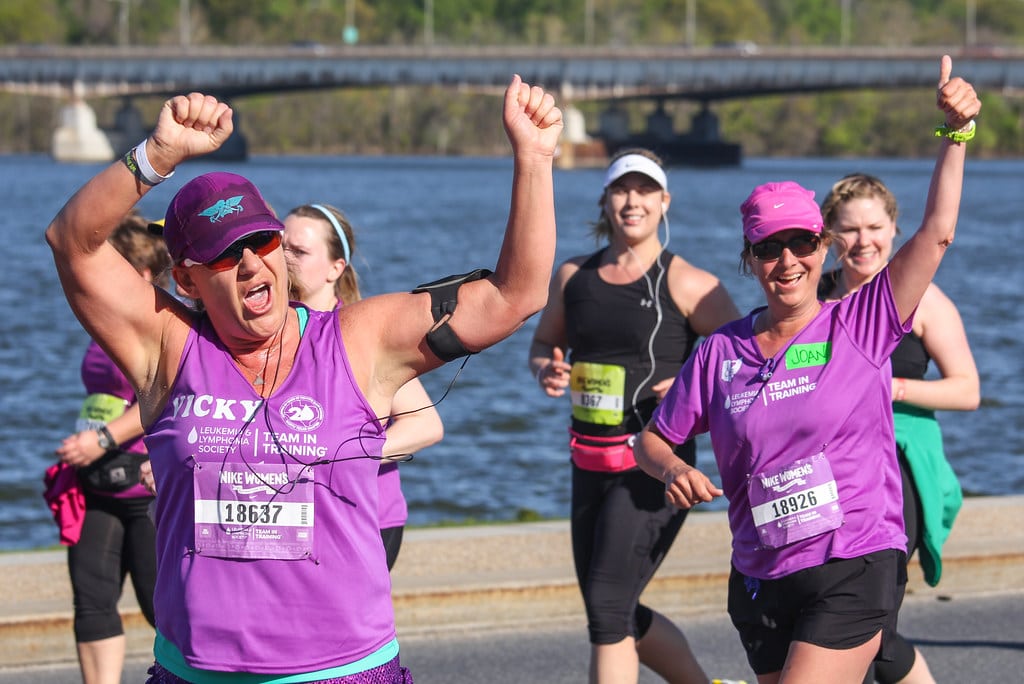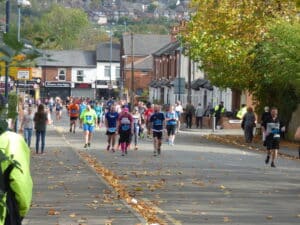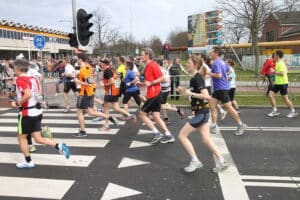Are you looking for a walking programme to prepare for walking half marathon training? You’ve come to the correct place! Walking a half marathon is an excellent aim for individuals who:
Wish to increase their activity,
Maybe gradually transitioning to running in the future
Or just to feel a feeling of personal achievement while working toward a healthy objective.
Yes, many half-marathons cater to runners, but there are others that allow walkers as well.
The Half Marathon may be great things to walkers. It’s long enough to be difficult, but not so long that it takes months to prepare for or recuperate from. A newbie may train for a half marathon in three to four months; a regular leisure walker can train for the 21.1k challenge in two months; and anybody who walks briskly for one hour on a regular basis can train in one month.
Finishing a half marathon is a fantastic goal, but after a few, you’ll surely want to run faster. This guide is for you, whether you’re a first-timer, a second-timer, or a ten-timer.
First And Foremost, Put Your Safety First
To begin, make certain that starting an exercise regimen is safe for you. Fill out the safety checklist below, and if you respond YES to one or more of the questions, or if you have any concerns about commencing training.
Checklist for Health-Related Safety
- Are you over 30 years old and/or haven’t exercised in a long time?
- Are you afflicted by any medical conditions?
- Do you smoke or have you recently quit smoking?
- Have you had any surgical procedures in the last two years?
- Have you sustained any injuries?
- Do you use any prescription medications?
- Are you hesitant to start a fitness routine?
You can begin training after your doctor has given you the go light.
Structure of This Guide
Different sorts of training walks are included in the programme of walking half marathon training including ‘Slow,’ ‘Steady,’ ‘Tempo,’ and ‘Interval’ sessions.
It will mostly consist of four training walks per week, with distance and intensity steadily increasing, as well as some gym work, cross-training, and routine maintenance. There are also mandatory break intervals, because overtraining must be avoided in any type of training programme.
Flexibility is beneficial
This is for maintaining your body and ensuring the health of your muscles and joints. Stretching and foam rolling on a regular basis will be extremely useful to you during your training. It will not only aid in your recuperation and performance, but it will also lower your chances of developing an overuse injury.
If you’re unclear how to go about getting a regular flexibility workout, go to a member of staff at your local gym/health club and ask them to build out a programme for you.
Techniques for walking
Another crucial topic to concentrate on is proper walking style. While technique is a vast subject, here are some basic guidelines to get you started:
- Walk with good posture by standing tall and pulling your shoulders back. The alignment of your head, neck, and spine should all be perfect.
- Swing from your shoulders, keeping your arms at your sides and elbows bent at 90 degrees.
- Avoid over striding, which can cause undue strain on the body. Simply increase the number of steps you take every minute to begin.
If you want to learn more, there are several walking clubs with expert instructors that can provide you with further information.

Running Pace Guide
Here are some samples of your running pace and how it will translate into a Running pace calculator for your half marathon walk finish time:
- 14 minute mile (8 minutes 43 seconds per kilometre) = 3 hours 4 minutes
- 15 minute mile (9 minutes 19 seconds per kilometre) = 3 hours 17 minutes
- 16 minute mile (9 minutes 57 seconds per kilometre) = 3 hours 30 minutes
- 17 minute mile (10 minutes 33 seconds per kilometre) = 3 hours 55 minutes
- 18 minute mile (11 minutes 10 seconds per kilometre) = 4 hours 21 minutes
Nutrition and Refueling
As your mileage increases, you’ll need to pay more attention to your Half Marathon Diets Plan during your workout. You should eat healthily throughout the week as a general rule. Make sure you’re getting lots of fruits and vegetables, as well as excellent fats and proteins, and that you’re not overdoing it on the starchy carbs. If you’re eating correctly, you shouldn’t need any extra nutrition before your mid-week workouts; your energy stores should be sufficient to tackle the maximum distance of 6 miles you’ll be covering.
You may want to consider adding some fuel during longer sessions of over 6-8 kilometres and higher. What foods should you consume? Gels, jelly babies, flapjacks, and energy drinks are also popular choices. Because it’s totally personal, the goal is to discover something that works for you.
You should do your homework ahead of time to see what will be accessible on the day, since races will include fueling stations. If you can get in the habit of accepting whatever is available on the day, you’ll be able to lessen the quantity of stuff you need to carry about with you.
Hydration
The importance of hydration cannot be overstated. The quantity of water you’ll need depends on a variety of factors, including how fast you’re walking, how much you’re sweating, and the temperature.
When you’re out on your training walks or on race day, a basic rule of thumb is to drink little and often, but pay attention to your body. Start with 300-500ml every hour on your training walks and see how that works for you.
Endurance
It doesn’t need a university degree to realise that endurance is the key to running a half marathon. It’s all about the ability to go the distance, regardless of pace. Endurance is made up of two components:
1) Aerobic endurance — the heart’s capacity to pump huge quantities of blood to give oxygen to the working muscles.
2) Muscular endurance — the capacity of the legs to keep going for long periods of time.
The easiest approach to attain both of these goals is to walk nonstop for long periods of time on a regular basis. Shorter workouts done more frequently are always preferable than lengthier workouts done less frequently. For example, training every other day is better than training five days in a row and then having to take three days off.
If you walk competitively or want to improve your half marathon time, 10 hours of walking spread out over five or six days will be more beneficial than 10 hours spread out over four days. In addition to consistency, the sort of walking you perform has a significant impact on your endurance.
When you’re just starting out, don’t walk too quickly or take on too many hills. If you do, you’ll tyre out too fast and be forced to stop or take breaks, meaning you won’t be able to gain endurance.
There is a place for quicker exercises and hillier workouts if you want to go faster or be competitive, but only after you’ve built a good basis of fitness via constant walking at easy to steady levels.
You won’t be able to tolerate enough rapid or uphill walking to gain the advantages without this underlying fitness. Changing the distance you walk is another way to improve endurance. Instead than walking for the same amount of time or distance each time, consider going for a longer walk one time and a shorter stroll the next. For example, instead of walking 45 minutes per session, you can progress quicker by alternating 60-minute and 30-minute walks.
This is the adaptation process, in which the longer walks continue to test your stamina while the shorter walks allow you to recuperate and maintain fitness in preparation for the next larger walk.
Some of your lengthier days (once a week for most individuals) will eventually need to be progressively increased to around 21k or two hours. If you pace yourself, a novice who can run 16 kilometres will be able to do a half marathon easily. Someone with time or place ambitions, on the other hand, should walk at least 20 kilometres once a week.
Cross-Train
You may mix it up by substituting various activities on different days of the week. This is sometimes referred to as “cross-training” by runners. What kind of cross-training should a fitness walker do? Swimming, cycling, cross-country skiing, snowshoeing, or a mix of these activities, such as stretching or strength training at a gym, is all possibilities. If you want to do so, the sort of cross-training you do depends on your particular preferences. Make sure you’re not overdoing it with your cross-training.
Take Your Time
Is the 12-week transition from 3 to 13.1 miles too difficult? Do you have a half marathon coming up in more than a dozen weeks? Extend the timeline; plan for 18 or even 24 weeks.
Before going on to the next level, repeat the previous week. Don’t be hesitant to incorporate “stepback” weeks, in which you reduce your distance every second or third week to build forces for the following upward push. This training programme isn’t set in stone. If you need additional time to prepare, feel free to be creative.
Frequently Questions
While the majority of half marathons are for runners, walkers can complete them as well. A half marathon has the advantage of not requiring as much time on the course as a full marathon. Most people who are fairly fit should be able to walk 13.1 miles in around four hours.
Steps: 20,000
A half marathon runner will take roughly 20,000 steps on average. That’s a lot of steps to take! In a typical day, the average American walks 4,000 steps. As a result, you’d take 5 times as many steps as the typical American.
Walking is a low-impact, moderate-intensity activity with a variety of health advantages and minimal dangers. As a result, the Centers for Disease Control and Prevention recommends that most individuals take 10,000 steps each day. This is the equivalent of around 8 kilometres (5 miles) for most individuals.
There is no one statistic or method that can determine how much walking is excessive. While some people walk more than 10,000 steps each day as part of their profession, others must work hard to accomplish even half that amount.
Conclusion
It’s quite satisfying to train for and complete a half marathon walk. And you can achieve it in a matter of months, especially if you are already a frequent walker.
You should also attempt to walk the lengthy training day at the same time as the half-marathon event. This allows you to become accustomed to how your body feels and what you need to eat and drink in order to be ready for the start time.
If you normally train in the afternoon or evening but the race is in the morning, it will make a tremendous difference.
You should also wear the shoes, socks, and clothes that you plan to wear for walking half marathon training on your long walks.
This will reveal whether or not these goods operate effectively in high-mileage situations. “Nothing new on race day,” as the saying goes. Allow ample time throughout your workout to give everything a good shakedown and swap to alternative gear if what you picked isn’t working well.
RELATED ARTICLES













